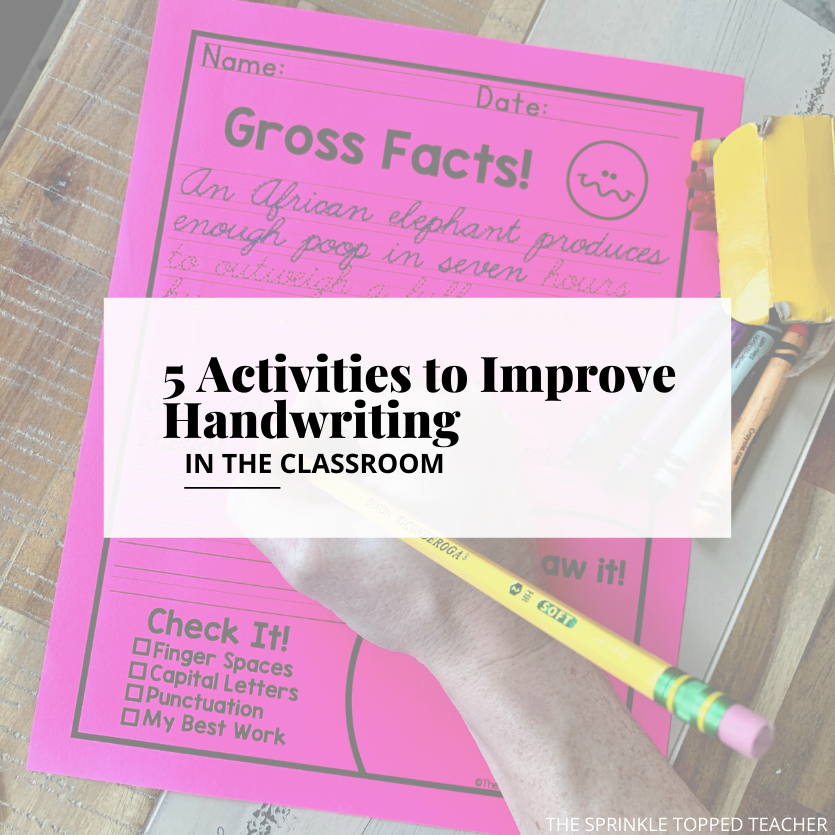
5 Activities to Improve Handwriting in the Classroom
Whether you teach younger or older students, children of all ages need extra handwriting practice from time to time. However, it’s more common for a student to find handwriting practice boring than fun. I struggled to find a solution to this problem for a while!
Luckily, I have discovered some amazing activities to improve students’ handwriting over the years. Some of these ideas might be surprising. Students don’t need to write words over and over to improve their penmanship. A lot of other activities can hone those fine motor skills just as well as repetition!

Why do some students need activities to improve handwriting?
There are several reasons why your students might be struggling with handwriting. It depends on the student. Some students rush through their writing because they don’t enjoy it or generally dislike school work. Other students lack the fine motor skills that allow them to grip their pencil properly and move it with accuracy.
No matter why your students are struggling with writing, there are tons of fun activities out there that can help them gain confidence and write with ease. Many of them don’t even involve writing! Activities that let students practice their fine motor skills and concentrate on putting a writing utensil to paper are just as useful as writing letters and sentences. Plus, they won’t even realize that they are improving their handwriting!
1. Mazes and connect the dots
What do mazes and connect the dots activities have in common with handwriting? These tasks help children practice maneuvering their writing utensil with precision, which is key for good handwriting. In addition, picking up a pencil strengthens their hand muscles.
You can easily find mazes online to print for free. To best exercise their fine motor muscles, have your students or children try to complete the maze without touching the lines.
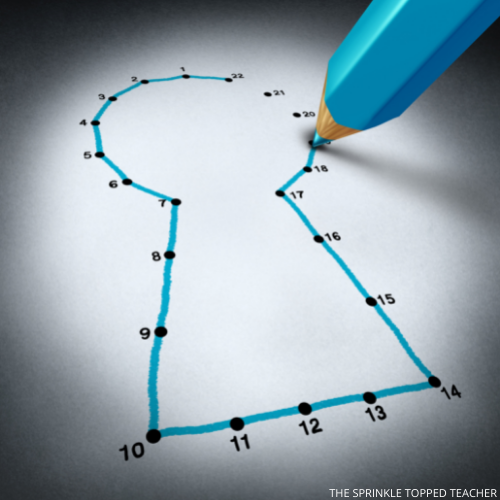
2. Sharpen their fine motor skills through drawing
Yes, arts and crafts time can help students develop great handwriting! When students draw, they are practicing their fine motor skills. Drawing is also a fantastic way for kids to get creative and express themselves. You can have students trace pictures or draw their own. Either way, they will have loads of fun while strengthening their hand muscles.
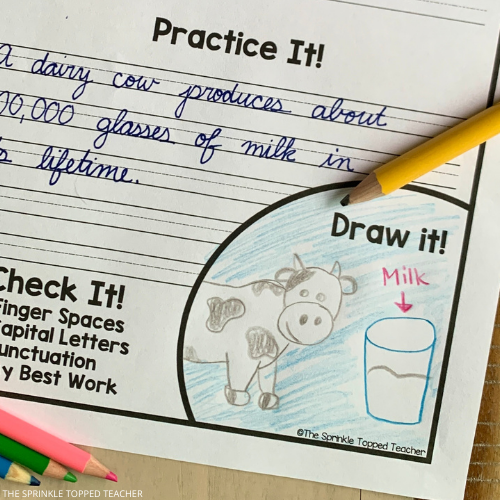
3. Use silly handwriting worksheets
Handwriting worksheets don’t have to be boring! In fact, worksheets with a silly twist can be just as engaging as your typical “fun” activities in class. These Silly Handwriting Worksheets come in a print version and a cursive version. Students get to read and write gross facts, which is entertaining for even older students! This practice is great for kids who already know how to form their letters, but can’t seem to slow down and write neatly.
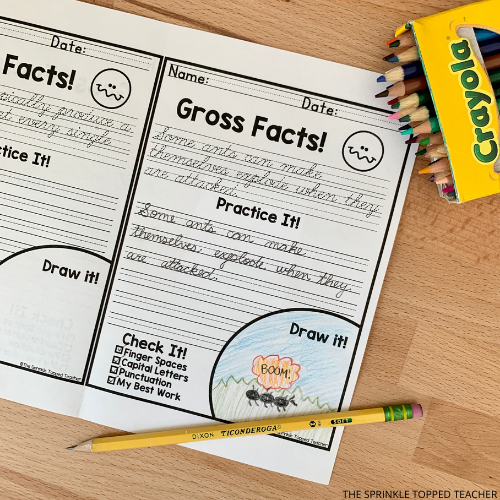
What’s included in the Silly Handwriting Worksheets?
Both the print and cursive versions of Silly Handwriting Worksheets include 26 pages, one for each letter of the alphabet. Each page has a practice sentence to trace, followed by blank lines to practice independently. It also includes a checklist at the bottom of each page for students to self assess for punctuation, capitalization, spacing, and best work as well as a place to draw a silly picture that goes with the page.
I love using these Silly Handwriting Worksheets for our morning warm ups, handwriting booklets, and as extra practice homework for students who are struggling. My kids always look forward to these worksheets and getting creative with their drawings. They hardly even notice that they’re practicing their handwriting!
4. Try rainbow writing
Break out the colored pencils and crayons and let your students rainbow write! Rainbow writing is a great way to practice vocabulary words and master letter formation. Students pick out a few of their favorite colors and go over a letter or word with those colors. This activity helps with repetition and muscle memory. Since repetition is typically necessary to really hone those writing skills, but isn’t very exciting. Rainbow writing is a great way to incorporate repetition without boring your students!
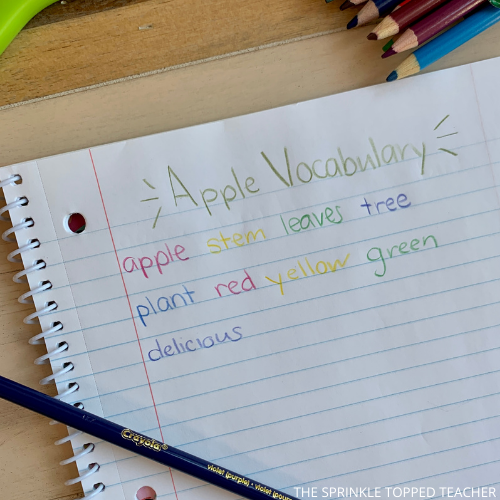
5. Practice cursive
Don’t forget cursive when you’re planning your handwriting lessons! The fine motor skills that cursive writing requires can help students with their print writing, too. I love using my Cursive Silly Handwriting Sheets when I’m looking for activities to improve handwriting with my students. Cursive is a key skill that students will carry with them for the rest of their school years and beyond.
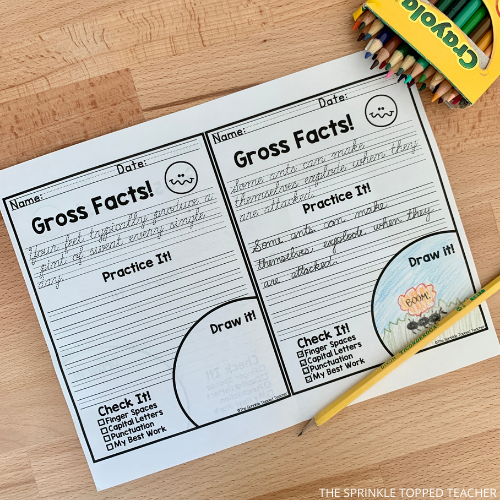
Conclusion
If you’re stuck on how to make handwriting fun for your students, these 5 activities to improve handwriting are perfect for you. From mazes to silly sentences, these ideas keep both younger and older students entertained while working in the practice they need.
Do you use any of these activities to improve handwriting in your classroom? Let me know if you’ll try them out — I’d love to hear from you!